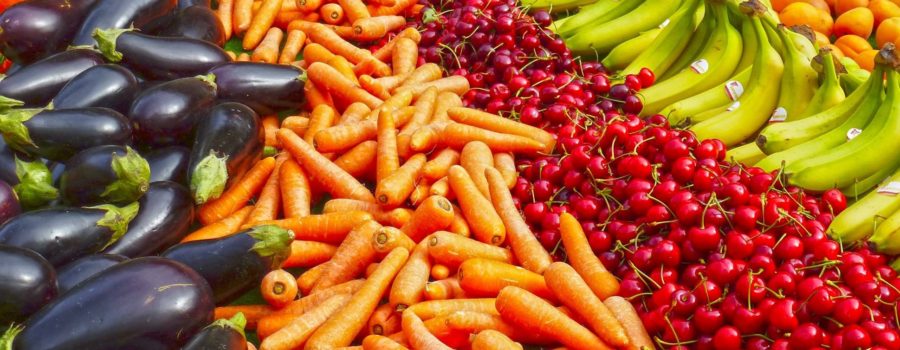According to the US Environmental Protection Agency, strong evidence exists for long-term negative health outcomes from pesticides commonly used to farm many of the fruits and vegetables that we frequently consume. These include birth defects, neurological disorders, and many types of cancers.
Yikes!
While use of these harmful chemicals is federally regulated, “trace” amounts still find their way onto some of the foods we eat. Compounded in our bodies over time, these dangerous chemicals can pose a serious threat to our ability to age gracefully.
Kind readers, this is not one of those highly debatable, conspiracy theory types of issues about which we can look the other way. The fact that some of our foods contain these chemicals is unquestionable, as is the fact that these chemicals can be harmful to our health.
If living a long, vital life is something to which you aspire then you absolutely should consider eating at least somewhat organically.
Like most things, I tend to view the question about organics through the lens of practicality. Exactly how dangerous is non-organic produce, and how strict do we need to be in avoiding it? Should this be an all-or-nothing thing, or can we achieve most of the benefit by avoiding only the worst offenders?
After all, produce is expensive these days, and organic produce is especially so! Are we really stuck buying 100% organic produce for the rest of our lives?
That’s the question I set out to answer when I began researching this topic several years ago.
My research led me to an organization called the Environmental Working Group (EWG) that produces an annual report about contaminants found in random samples of produce sold in the United States. This report is referenced often by food industry and regulatory leaders and is highly regarded for its accuracy and objectiveness. While the report is very detailed, it summarizes the 12 worst offenders as what it calls the “Dirty Dozen”.
I’ve noticed that the list does change slightly from year to year, but there are mainstays on the list, and there are entire groups of foods that are repeatedly worse than others.
So, in the interest of simplicity, I’ve condensed several years’ worth of EWG reports, along with additional insights gained from other reputable sources, into an easy-to-remember list of 6 food categories I believe are worth a trip down the organic produce aisle.
In the Donovan household, we’ve begun referring to these foods as the “Slimy Six”.
For the rest of my produce, I’m inclined to save a few bucks and buy the conventional stuff. That’s my simple and sustainable compromise. But it’s up to you how strict you want to be.
Without further ado, here are my “Slimy Six” categories of produce that you should consider plucking from the organic aisle, in order of offensiveness.
The “Slimy Six”
- Berries: Includes strawberries, blueberries, and blackberries. Berries are among the most pesticide-containing types of produce in the United States. Strawberries are the worst-of-the-worst and receive up to 500 pounds of pesticides per acre. If you were to choose one type of produce to always buy organic, berries would be it.
- Green, leafy vegetables: Includes spinach, most lettuces, collard greens, etc. These are frequently contaminated with what are considered the most potent pesticides used on food.
- Peppers: Includes all varieties, with bell peppers being the most contaminated. Peppers have thin skin which offers little barrier to the 90 different pesticides used to grow them.
- Peaches and Nectarines: In conventional orchards, as many as 45 different pesticides are regularly applied to peaches and nectarines. ‘Nuff said.
- Tomatoes: Includes all varieties, but cherry tomatoes are the worst. The EWG regularly found 13 different pesticides on their samples.
- Apples and Pears: The EWG found that 98 percent of apples and pears were contaminated with pesticides, and even removing the skin does not eliminate chemical residue.
I suggest you screen capture this list on your phone so that you have it handy during your next trip to the grocery store.
One thing all these produce categories have in common is that they are some of the healthiest foods on the planet. So, to be clear, I’m not suggesting you avoid eating them. I’m suggesting that you buy the organic versions…and every time.
Interestingly, the EWG also publishes an annual “Clean 15”, which is a list of foods that don’t contain many pesticides or contaminants. These are foods for which buying organic might be considered a waste of money. In 2023 this list includes avocados, sweet corn, pineapple, onions, papaya, frozen peas, asparagus, honeydew, kiwi, cabbage, mushrooms, mangoes, sweet potatoes, watermelon, and carrots.
It should be noted that this list consists of fruits and vegetables only. When one starts considering beef, poultry, and seafood the conversation gets a bit more complicated and extends well beyond the definition of organic.
This is a topic for a different day, but in case you’re wondering, our beef is almost always “grass fed”, poultry and eggs are ideally “free range”, and seafood is “wild caught” whenever possible. Yes, these options are expensive, and we do make concessions from time to time in the interest of practicality. But that’s ok by us.
Before I wrap this up, I’d feel remiss if I didn’t mention one other item that I believe to be of critical importance, and that is oatmeal. The Donovan household goes through oatmeal like our Basset Hound, Fred, goes through dog treats! But did you know that conventional oatmeal is harvested with glyphosate, the same carcinogen found in Roundup weed killer? Yep, it’s true. Look it up. It’s loaded with the stuff! For this reason, I suggest you buy organic oatmeal, which is readily available in the health food aisle in most supermarkets and contains very little of this toxic chemical. Pro tip: It also tastes way better!
Keep an eye on my blog for additional content on this topic and healthy eating in general. And feel free to reach out to me with questions or feedback. As always, if you ever need help planning for the care of an elderly loved one, know that One Life Consulting is there for you.





